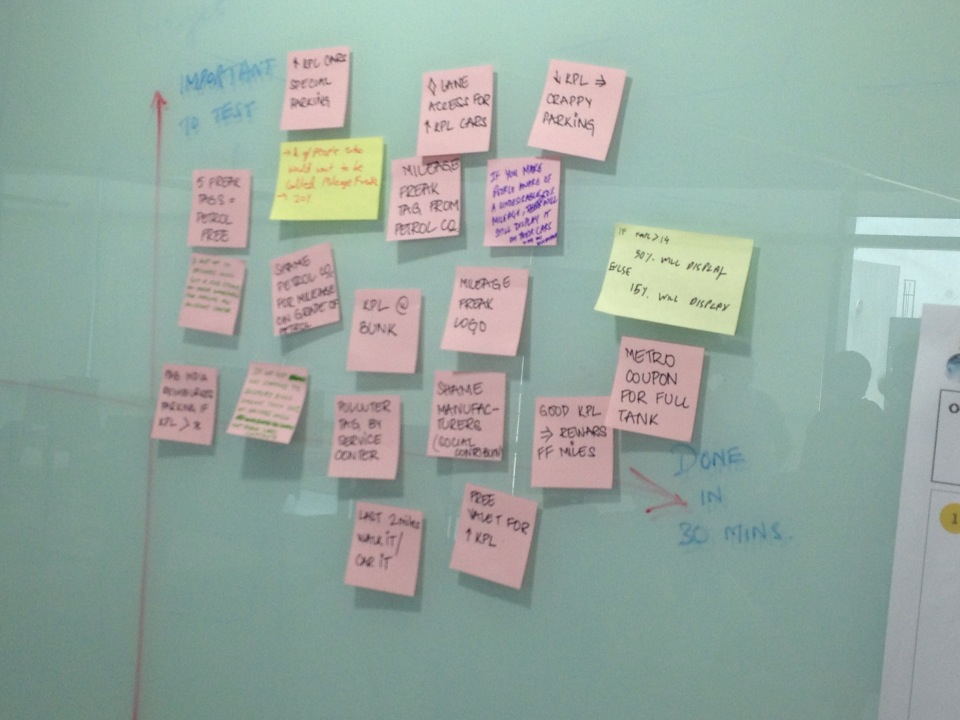Building a product startup is exciting. Most startups look to raise capital early and investors look no other measure but traction to take their bets. This need for traction puts immense pressure on the founding team to grow their startup. That leads to implementing multiple tips and tricks to improve the key product metrics – most importantly to show traction to investors. Founders get into the so called ‘growth hacking’ mode.
Growth hacking is the new buzzword in the startup town. There is nothing wrong with ‘hacking growth’ – most of the tricks attempted in this phase end up being short-term techniques. They might work for a while, bring traction for a while (which might lead you to raise investments) but these techniques don’t help in long term and the growth is not sustainable and quickly falls off.
Startups tend to neglect the simplest rules of product management before starting with growth hacking. According to me, here are the 5 Basic Rules of Product Management:
- User Engagement > Growth Hacking
- Retention > Acquisition
- Context > Activity
- Own growth channels > External channels
- Being Valuable > Being Social
A. User Engagement > Growth Hacking
Remember startups like BranchOut, Glassdoor, Viddy, Socialcam – that famously hacked growth through Facebook Dialog Feeds? Though they showed amazing growth curve initially, it soon fell off. Most users dropped off the product as quickly as they signed up never to return again. Reason – zero engagement on the product. Ensure that there are enough engagement loops on the product before you do any sort of ‘growth hacking’.
B. Retention > Acquisition
Acquiring users is the simplest thing to do, retaining them is the key. Any user acquisition technique should retain a good percentage of acquired users. Not just that., over a period of time the users who dropped off should be reactivated – there should be enough methods to pull them back – emailers / network effects / and so on. If the product has strong engagement features, retention is a easy task.
C. Context > Activity
Most products undermine the importance of context. In today’s world – anything that is not context is considered spam. The finest examples of a context driven product is Quora that lets you follow topics of your interest and helps you discover relevant content. Also important are products like Twitter (that lets you follow users) and Pinterest (that lets you follow boards) to build a information stream in context thats relevant to you. Think of context when you build features.
D. Own Channels > External Channels
Many startups focus on external channels for growth. Branchout was focussed on Facebook Dialog Feeds, Zynga was focused on Facebook Activity Wall, Viddy was focussed on Facebook Open Graph. Perfectly fine – if there are enough engagement loops and good retention strategy. However depending on external channels might not be sustainable – many startups hacked the Facebook Open Graph to get significant users – this led to users complaining about to the noise on Facebook wall, Facebook in return built many approvals / controls to prevent applications from spamming the users and giving users ease to block spam applications.
Large startups like Facebook, Dropbox, WhatsApp were completely focussed on driving growth through channels owned by self and had very little or no external dependence for growth. Don’t depend too much on external platforms like Facebook, Twitter, Google (SEO) for growth – build our own channels. Facebook’s journey of growth hacking is well documented. Also Dropbox as mentioned in next point.
E. Being Valuable > Being Social
There are also startups that focus on building ‘too-many’ social sharing features, expecting users to share almost everything and anything on to their social profiles (Facebook, Twitter, etc). Users are smart – they don’t fall in this trap and founders keep wondering why no social sharing happens. Instead of trying to be forceful on social, focus on being valuable.
Example – Dropbox, it was a very valuable product that had super methods to hack growth – by connecting FB or Twitter account with Dropbox and providing users additional storage space by asking them to spread a message to their social circle or invite email contacts.
Concluding Notes:
Can you hack growth first and implement these rules later? No. There are startups that hacked user acquisition and raised initial investment on traction., and later things did not go according to the plan. Not just startups, that leaves even investors wondering what went wrong after the initial impressive growth metrics.
Startups are about growth, no doubt. Getting Techcrunche’d (PR release), top position on Hacker News or Video that goes viral might bring one-time traffic boost / user sign-ups. You can get good amount of traffic by integrating with Facebook Open Graph, optimizing site for Google (SEO) or even paid user acquisition – but make sure that the product has enough engagement, retention loops, value and context to sustain the users you are acquiring!
You may hack growth., but you can’t hack success. Building the next billion dollar company is a big deal!


